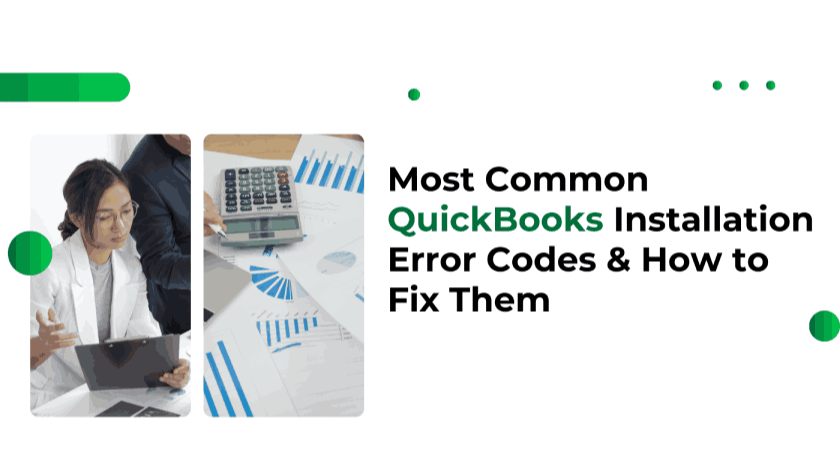The QuickBooks Error 6000 series is commonly linked to issues that prevent users from accessing their company files. Some frequent error codes in this category include 6000 83, 6000 80, 6000 77, 6000 301, and 6000 832. These errors can occur for various reasons, including but not limited to:
-
Firewall restrictions blocking QuickBooks connections
-
Corruption in the .TLG (Transaction Log) file
-
Damaged QuickBooks installation files
-
Incorrect network configuration
-
These errors may arise when multiple users attempt to access the same company file at the same time, potentially leading to conflicts or data inconsistencies.
-
Failed restoration of a previous company file backup
-
Damage to the company file itself
Troubleshooting and Solutions
Solution 1: Restore a Previous Backup
-
Open QuickBooks and navigate to the File menu.
-
Click on Utilities from the dropdown options.
-
Select Stop Hosting Multi-user Access to ensure that QuickBooks is not running in a shared mode.
-
Ensure that the company file name is concise, within the character limit, and appropriately formatted for future reference.
-
Try restoring a previous backup to check if the issue gets resolved.
Solution 2: Adjust Firewall and Antivirus Settings
-
Launch the QuickBooks Database Server Manager on your computer to manage multi-user access and ensure smooth database connectivity.
-
Locate and select the Port Monitor tab to determine the version of QuickBooks being used.
-
Take note of the firewall port number displayed on the screen.
-
Open Windows Firewall from the Control Panel.
-
Navigate to the firewall settings and select Advanced Settings to configure rules and permissions for QuickBooks network access.
-
Locate Inbound Rules, then right-click and select New Rule.
-
Choose Port and proceed with the configuration by clicking Next.
This process helps ensure that QuickBooks has unrestricted access through the firewall, allowing seamless communication over the network.
Solution 3: Move the Company File to a New Location
-
Go to the directory where your company file is located to access or manage it as needed.
-
Copy the company file and paste it into a different location—either another folder on the local drive or a network-shared folder.
-
Launch QuickBooks and attempt to open the company file from its newly assigned location to ensure proper access and functionality.
-
If the file opens successfully, it may indicate that the original location contained a bad sector, leading to the error.
Solution 4: Rename the .ND and .TLG Files
-
Navigate to the folder where your company file is stored.
-
Look for files that have the same name as your company file but with .ND and .TLG extensions.
-
Right-click on each of these files and select Rename.
-
Add .OLD at the end of their names (e.g., CompanyFile.ND → CompanyFile.ND.OLD).
-
Save the changes and try opening QuickBooks again.
Renaming these files forces QuickBooks to generate fresh versions, which often resolves corruption issues related to network data or transaction logs.
QuickBooks Error 6000 301
What Causes QuickBooks Error 6000 301?
This error occurs when QuickBooks is unable to open or access the company file. Some of the main reasons for this problem include:
-
Damaged or Corrupted Company File – The error may stem from a corrupted Network Descriptor (.ND) file, Transaction Log (.TLG) file, or Data Source Name (.DSN) file. If any of these files become damaged, QuickBooks will be unable to open the company file.
-
Third-Party Encryption Software – If encryption software is installed on the system, it may interfere with QuickBooks, preventing it from accessing the necessary files.
Steps to Fix QuickBooks Error 6000 301
Solution 1: Update QuickBooks Desktop
-
Launch QuickBooks Desktop and navigate to the Help menu.
-
Select Update QuickBooks Desktop, then go to the Update Now tab.
-
Mark the checkbox for Reset Update, and finally, click Get Updates to begin the process.
-
Once the update is complete, restart QuickBooks and check if the issue is resolved.
Solution 2: Rename Corrupted Files
-
Find the directory where your company file is saved on your computer or network.
-
Identify the files with the same name as the company file but with extensions .ND, .TLG, and .DSN.
-
Right-click on each file and select Rename.
-
Add .OLD at the end of the filename (e.g., CompanyFile.ND → CompanyFile.ND.OLD).
-
Launch QuickBooks and attempt to open the company file once more to check if the issue is resolved.
Solution 3: Disable Third-Party Encryption Software
-
Open the encryption software installed on your computer.
-
Navigate to Settings and temporarily disable the encryption feature.
-
Close QuickBooks completely, then restart the application and verify if the error persists.
Solution 4: Use QuickBooks File Doctor
-
Download and install QuickBooks Tool Hub from the QB Advisors LLC website.
-
Open Tool Hub and select Company File Issues.
-
Launch QuickBooks File Doctor, then choose the company file that is experiencing issues to begin the repair process.
-
Choose Both File Damage and Network Connectivity and click Next.
-
Enter your Admin Credentials and allow the scan to complete.
-
Close QuickBooks completely, restart the application, and check if the problem has been fixed.
QuickBooks Error 6000 95
This error typically appears when users attempt to restore a company file. Some of the common causes include:
-
Corrupt Windows Operating System – If the system has corrupted files, QuickBooks may encounter errors when restoring a backup.
-
Hardware Issues & Registry Errors – A failing hard drive, fragmented files, or incorrect registry settings can lead to this problem.
How to Fix QuickBooks Error 6000 95
Solution 1: Perform a System Restore
-
Open the Start menu and type System Restore in the search bar.
-
Click on Create a Restore Point, then select System Restore to begin the process.
-
Choose a restore point before the error occurred and click Next.
-
Follow the on-screen instructions to restore the system to a previous state.
-
Reboot your computer and then attempt to restore the company file once more to check if the issue is resolved.
Solution 2: Keep QuickBooks Updated & Maintain Backups
QuickBooks Error 6000 83
What Causes QuickBooks Error 6000 83?
This error typically occurs when trying to open, restore, or back up a company file. Some of the primary causes include:
-
Corrupted Company File or Folder
-
Firewall Blocking QuickBooks
-
Incorrect File Extensions
-
Improper QuickBooks Installation
-
Multiple Workstations Hosting the Same Company File
-
Limited User Permissions
How to Fix QuickBooks Error 6000 83
Encountering QuickBooks Error 6000 83 can be frustrating, especially when trying to access, restore, or back up a company file. This error typically arises due to incorrect file permissions, firewall restrictions, or multiple systems attempting to access the same file. Below, we provide a step-by-step guide to resolving this issue effectively.
Solution 1: Manually Adjust Firewall Settings
Firewall settings can sometimes block QuickBooks from accessing the company file. To resolve this:
-
Open the Windows Firewall and navigate to Advanced Settings.
-
Click on Inbound Rules and choose New Rule.
-
Select Port, then enter the port number specific to your QuickBooks version.
-
Choose Allow the Connection and click Next.
-
Repeat these steps for Outbound Rules to ensure full access.
-
Restart QuickBooks and attempt to open the company file again.
Solution 2: Modify File Permissions
File permission issues can prevent QuickBooks from accessing the required company files. To check and modify permissions:
-
Find the folder where your company file is stored on your system.
-
Right-click on the folder and choose Properties.
-
Switch to the Security tab and click Edit.
-
Ensure all users have Full Control over the file.
Solution 3: Disable Multi-User Mode
If multiple users are trying to access the company file simultaneously, it may cause conflicts. To turn off multi-user mode:
-
Open QuickBooks on the host computer.
-
Click File > Utilities.
-
Select Stop Hosting Multi-User Access and confirm by clicking Yes.
-
Close QuickBooks, then reopen it to check if the issue has been resolved.
Solution 4: Move the Company File to Another Location
At times, the issue may stem from the file’s current location. To fix this:
-
Find the company file and copy it to a different folder.
-
Open QuickBooks and try accessing the file from this new location.
-
If it works, move it back to the original location and try again.
Fixing Errors While Restoring a Backup
Solution 1: Verify Filename and Path
Special characters in the filename or file path can cause issues while restoring a backup. To fix this:
-
Ensure the company file name and path do not contain symbols like ! @ # $ % ^ & *.
-
Rename the file and remove any special characters if needed.
-
Try restoring the backup again.
Solution 2: Check File Extension
The company file must have the correct .QBW extension while restoring a backup. If not:
-
Rename the file and change its extension to .QBW.
-
Try restoring the backup again in QuickBooks.
QuickBooks Error 6000 301
When QuickBooks Error 6000 301 appears, it usually means QuickBooks is unable to open the company file. This error may occur due to file corruption, network-related issues, or interference from third-party software.
Potential Causes of QuickBooks Error 6000 301
-
Corrupt Company File – If the company file is damaged, QuickBooks may fail to open it.
-
Issues with Supporting Files – Damaged .ND, .TLG, or .DSN files can prevent QuickBooks from reading data.
-
Encryption Software Interference – Third-party security programs can block QuickBooks from accessing files.
Solutions to Fix QuickBooks Error 6000 301
Solution A: Update QuickBooks
Outdated versions of QuickBooks may contain glitches affecting file access. To update:
-
Open QuickBooks, then go to the Help menu and select Update QuickBooks Desktop.
-
Download and install the latest updates.
-
Restart QuickBooks and check if the error continues to appear.
Solution B: Rename Damaged QuickBooks Files
-
Go to the folder where your company file is stored on your computer.
-
Look for files with the .ND, .TLG, or .DSN extensions.
-
Rename these files by adding .OLD at the end (e.g., CompanyFile.ND.OLD).
-
Restart QuickBooks and try opening the company file.
Solution C: Disable Encryption Software
If encryption software is installed on your system, temporarily disable it and check if the error disappears.
Solution D: Run QuickBooks File Doctor
-
Download and install QuickBooks File Doctor from the official QB Advisors LLC website.
-
Open the tool and select the affected company file.
-
Perform a scan to detect and resolve any errors.
-
Restart QuickBooks and attempt to open the company file again.
QuickBooks Error 6000 95
This error occurs primarily when trying to restore a company file. It may be due to file corruption, hardware failure, or an issue with the Accountant’s Copy Transfer file.
Causes of QuickBooks Error 6000 95
-
Corrupted Windows system files during file transfer.
-
Hardware malfunctions affecting QuickBooks operations.
-
Problems with the accountant’s copy transfer file.
Solutions to Fix QuickBooks Error 6000 95
Solution A: Restore the System to a Previous State
-
Click Start > All Programs > System Tools > System Restore.
-
Choose a recent restore point and confirm the action.
-
Let the system restore and restart QuickBooks to check if the error is resolved.
Solution B: Keep QuickBooks Up to Date
-
Make sure you are running the latest version of QuickBooks to avoid compatibility issues.
-
Regular updates help prevent file restoration errors and system bugs.
-
Always keep a backup of your QuickBooks files to prevent data loss.
QuickBooks Error 61
This error appears when attempting to refresh data, download transactions, print reports, uninstall QuickBooks, or open an account within the software.
Common Causes of QuickBooks Error 61
-
Corrupt .QBW, .TLG, or .ND files.
-
Virus or malware infections affecting system files.
-
Accidental deletion of registry entries.
-
Banking details causing conflicts within QuickBooks.
Solutions to Fix QuickBooks Error 61
Solution A: Rebuild Data
-
Open QuickBooks and go to File > Utilities > Rebuild Data.
-
Follow on-screen instructions to repair data issues.
Solution B: Resort the Account List
-
Click Account > Resort List.
-
This helps in fixing minor errors and inconsistencies.
Solution C: Update QuickBooks
-
Always use the latest QuickBooks version to avoid software-related glitches.
QuickBooks Error 1723
This error occurs due to issues with the Windows Installer Package, preventing proper installation or updates of QuickBooks.
Solutions to Fix QuickBooks Error 1723
Solution A: Modify Folder Permissions
-
Press Windows + S and type %temp%.
-
Right-click on the Temp folder and go to Properties.
-
Under the Security tab, make sure Full Control is enabled.
-
Reinstall QuickBooks and check if the issue is resolved.
Solution B: Run QuickBooks Install Diagnostic Tool
-
Download and run the QuickBooks Install Diagnostic Tool from QB Advisors LLC’s website.
-
This tool detects and fixes installation errors automatically.
QuickBooks Error 6123, 0
This error occurs when restoring QuickBooks company files from an external drive or opening a file on a network server.
Causes of QuickBooks Error 6123, 0
Solutions to Fix QuickBooks Error 6123, 0
Solution A: Use QuickBooks File Doctor
Solution B: Rename Network Files
Solution C: Disable Antivirus Software
QuickBooks Error 12 0
This error occurs when there are incorrect system settings or missing registry files.
How to Fix QuickBooks Error 12 0
Solution A: Perform a System Restore
Solution B: Run a System File Checker Scan
Solution C: Update Windows and QuickBooks
Solution D: Adjust User Permissions
QuickBooks Error 1712
QuickBooks Error 1712 is a common installation issue that occurs when a user attempts to install QuickBooks in a damaged or encrypted folder. This error can also be triggered if remnants of a previously uninstalled QuickBooks version interfere with the new installation process. Additionally, issues like corrupted registry files, system malware, or conflicts with system settings can contribute to this problem.
When this error occurs, users may experience system crashes, sluggish performance, or an inability to install or update QuickBooks properly. If not resolved promptly, it can prevent users from accessing their accounting data and disrupt business operations.
Causes of QuickBooks Error 1712
Several factors can lead to this installation error, including:
-
Attempting to install QuickBooks in a corrupted or encrypted directory.
-
Overlapping files from a previously uninstalled QuickBooks version interfering with the new installation.
-
Registry errors caused by damaged or missing Windows registry entries.
-
Malware, viruses, or spyware affecting system files or QuickBooks installation components.
-
Multiple applications running in the background that conflict with the installation process.
Step-by-Step Solutions to Fix QuickBooks Error 1712
If you encounter QuickBooks Error 1712, follow these troubleshooting methods to resolve the issue.
Solution A: End QuickBooks Processes and Restart Your Computer
Sometimes, running processes linked to QuickBooks may interfere with the installation. Ending these processes can help resolve the issue.
-
Open Task Manager: Press Ctrl + Shift + Esc to open the Task Manager.
-
Find QuickBooks Processes: Look for any QuickBooks-related processes such as QBW32.exe.
-
End the Task: Right-click on the process and select End Task to stop it.
-
Restart Your Computer: Reboot your system to refresh system processes.
-
Attempt to Install QuickBooks Again: Try reinstalling QuickBooks to see if the error persists.
Solution B: Use QuickBooks Install Diagnostic Tool
QuickBooks provides a built-in Install Diagnostic Tool that helps identify and fix installation-related issues.
-
Download the Tool: Visit the official QuickBooks website and download the QuickBooks Install Diagnostic Tool.
-
Close All Running Applications: Ensure that no other applications are running before launching the tool.
-
Run the Tool: Open the tool and select “I am having problems installing QuickBooks” and then click OK.
-
Wait for the Tool to Finish: The process may take 15-20 minutes to scan and repair any installation errors.
-
Restart Your System: After the repair is complete, restart your computer and try installing QuickBooks again.
Solution C: Reinstall QuickBooks Using a Fresh Download
If the installation files are corrupted, downloading a fresh version of QuickBooks can resolve the issue.
-
Go to QuickBooks Desktop Download Page: Visit the official QuickBooks website.
-
Select the Correct Version: Choose the product edition and version you need.
-
Download the Installer: Click on Download and save the file to your computer.
-
Uninstall QuickBooks (if applicable):
-
Open Control Panel > Programs and Features.
-
Locate QuickBooks in the list, right-click, and select Uninstall.
-
Reinstall QuickBooks: Open the freshly downloaded installer and follow the on-screen instructions.
Solution D: Modify Registry Entries in Windows
If the error persists, incorrect registry values could be the issue. Adjusting the registry may help resolve the error. (Caution: Editing the registry can be risky. Proceed with caution or consult an IT expert.)
-
Open Windows Registry Editor:
-
Navigate to the User Shell Folders Path:
Locate:
sql
HKEY_CURRENT_USER\Software\Microsoft\Windows\CurrentVersion\Explorer\User Shell Folders
-
Find the "AppData" Entry:
-
Modify the File Path:
-
Save Changes and Restart:
QuickBooks Error 1712 is an installation-related issue that can stem from multiple sources, including system conflicts, outdated files, or malware. By following the solutions outlined above, users can efficiently troubleshoot and resolve the error.
 11183 Stone brook Dr. Manassas VA 20112
11183 Stone brook Dr. Manassas VA 20112
 Mon-Fri : 09:30 Am - 06:24 Pm
Mon-Fri : 09:30 Am - 06:24 Pm





